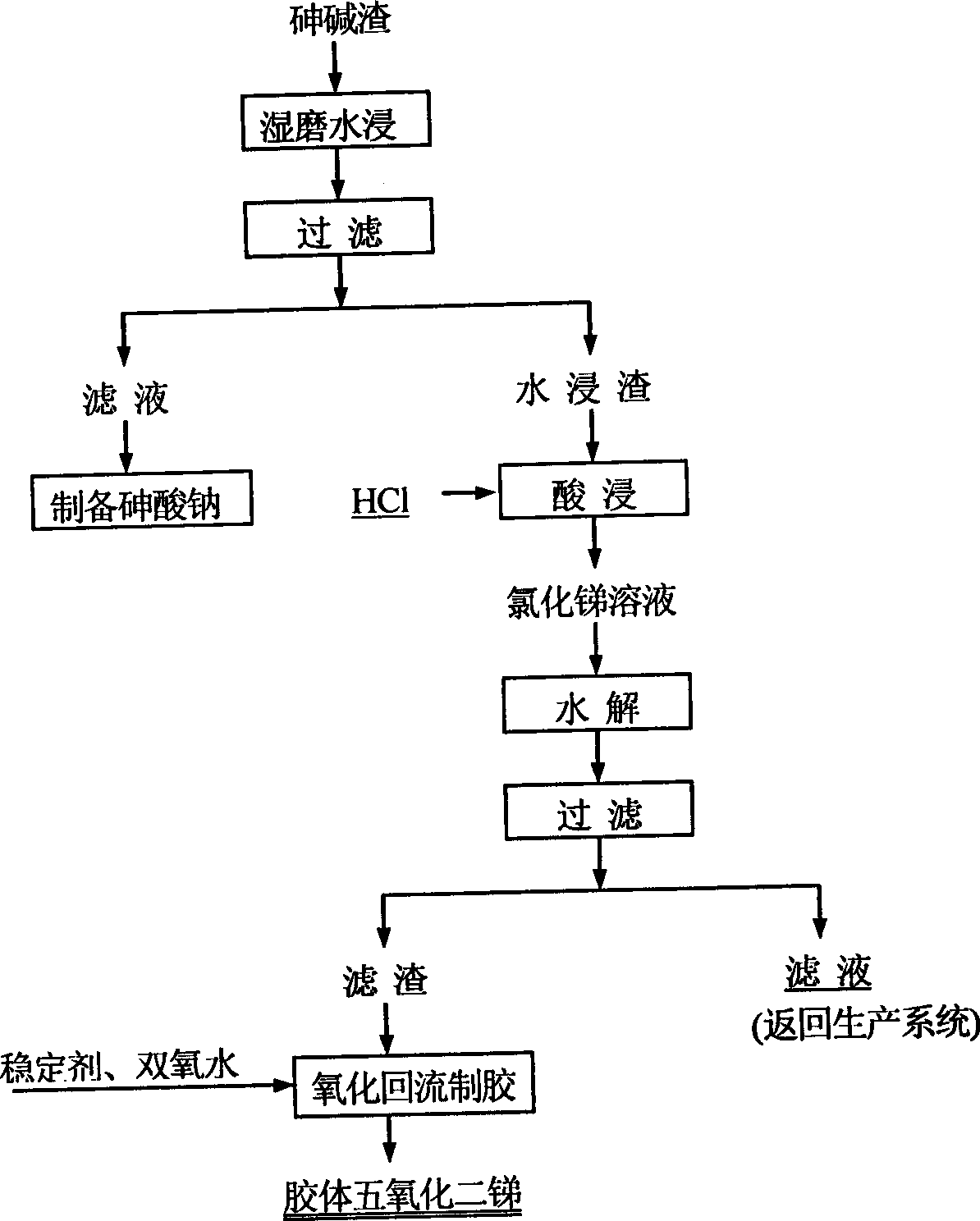Method for comprehensively processing stibium smelt arsenic alkaline residue and producing colloid antimony peroxide
A comprehensive treatment, arsenic-alkali slag technology, applied in the field of environmental engineering, can solve the problems of high dust concentration, complex process, unsatisfactory traditional wet treatment effect, etc.
- Summary
- Abstract
- Description
- Claims
- Application Information
AI Technical Summary
Problems solved by technology
Method used
Image
Examples
Embodiment 1
[0053] (1) Properties of arsenic-alkali slag
[0054] The arsenic-alkali slag used in the embodiment of the present invention (attached figure 2 ) is obtained from the Xingxing Antimony Industry in Xikuangshan, Hunan Province. Due to long-term exposure to the air, it absorbs a large amount of water and is difficult to break. Therefore, the arsenic-alkali slag must be dried first. During the laboratory research, the arsenic-alkali slag was dried, crushed, and ground to a size below 0.3 mm for later use. Chemical analysis shows that the percentages of arsenic and antimony are 6.37% and 33.32%, respectively, of which trivalent antimony is 17.37%, elemental antimony is 4.55%, and pentavalent antimony is 11.4%.
[0055] (2) Flooding
[0056] Under the conditions of controlling the liquid-solid ratio to 6:1, the temperature at 40°C, the stirring speed at 400rpm, and the leaching time of 40 minutes, the arsenic-alkali slag was leached in water. The antimony leaching rate was 4.09%...
PUM
 Login to View More
Login to View More Abstract
Description
Claims
Application Information
 Login to View More
Login to View More - R&D
- Intellectual Property
- Life Sciences
- Materials
- Tech Scout
- Unparalleled Data Quality
- Higher Quality Content
- 60% Fewer Hallucinations
Browse by: Latest US Patents, China's latest patents, Technical Efficacy Thesaurus, Application Domain, Technology Topic, Popular Technical Reports.
© 2025 PatSnap. All rights reserved.Legal|Privacy policy|Modern Slavery Act Transparency Statement|Sitemap|About US| Contact US: help@patsnap.com



